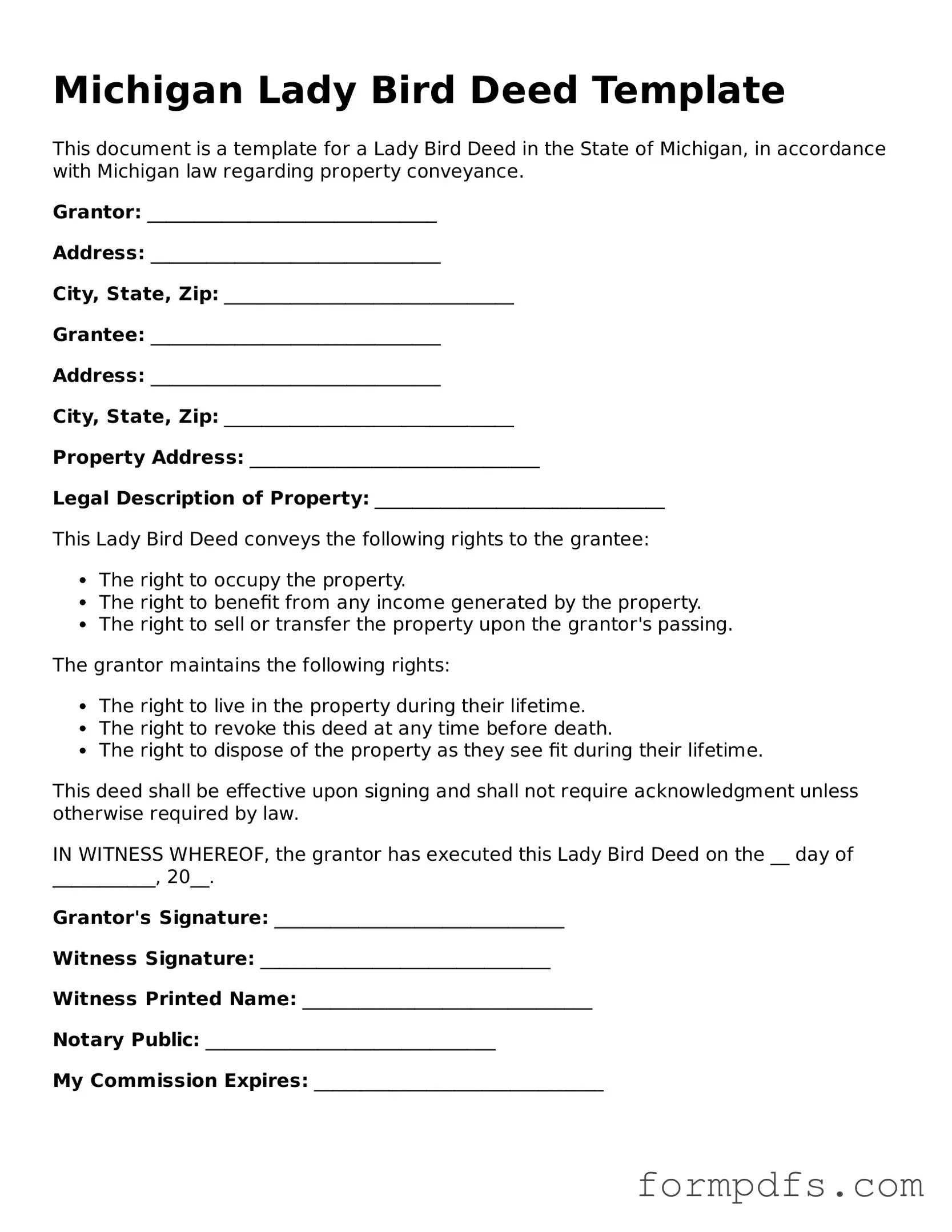What is a Michigan Lady Bird Deed?
A Michigan Lady Bird Deed is a type of transfer deed that allows property owners to transfer their real estate to their beneficiaries while retaining the right to live in and control the property during their lifetime. This unique arrangement helps avoid probate and can simplify the transfer of property upon the owner's death.
How does a Lady Bird Deed work?
With a Lady Bird Deed, the property owner retains full control of the property, including the right to sell, mortgage, or change the beneficiaries. Upon the owner’s death, the property automatically transfers to the named beneficiaries without going through probate, which can save time and costs associated with the probate process.
What are the benefits of using a Lady Bird Deed in Michigan?
There are several advantages to using a Lady Bird Deed. First, it allows for a smooth transfer of property upon death, avoiding the lengthy probate process. Second, the property owner retains control and can make changes to the deed or beneficiaries as needed. Additionally, it can provide tax benefits, as the property may receive a step-up in basis for the beneficiaries, potentially reducing capital gains taxes when they sell the property.
Who can create a Lady Bird Deed?
Any individual who owns real estate in Michigan can create a Lady Bird Deed. This includes homeowners, co-owners, and individuals who hold property in trust. It is essential that the property owner is of sound mind and understands the implications of the deed.
Are there any limitations on who can be named as a beneficiary?
Generally, beneficiaries can be individuals, such as family members or friends, or entities, like trusts or charities. However, it’s important to ensure that the beneficiaries are legally capable of receiving the property. Consulting with an attorney can help clarify any specific limitations that may apply.
Do I need an attorney to create a Lady Bird Deed?
While it is possible to create a Lady Bird Deed without an attorney, it is highly recommended to seek legal assistance. An attorney can ensure that the deed is correctly drafted, meets all legal requirements, and reflects the property owner's intentions. This can prevent potential disputes or complications in the future.
Can a Lady Bird Deed be revoked or changed?
Yes, a Lady Bird Deed can be revoked or changed at any time while the property owner is alive and mentally competent. The owner can simply create a new deed that revokes the previous one or modify the existing deed to change the beneficiaries or terms. It is advisable to document any changes properly to avoid confusion later.
What happens if the beneficiary predeceases the property owner?
If a named beneficiary passes away before the property owner, the property will not automatically transfer to that individual. Instead, the property owner may need to create a new deed to designate a different beneficiary. It’s crucial to regularly review and update the Lady Bird Deed to reflect any changes in circumstances.
Is a Lady Bird Deed valid in other states?
While the Lady Bird Deed is recognized in Michigan, other states may have different laws regarding property transfer and deeds. Some states may not allow this type of deed or may have different requirements. If you own property in multiple states, it is essential to consult with an attorney familiar with the laws in each state to ensure compliance.
